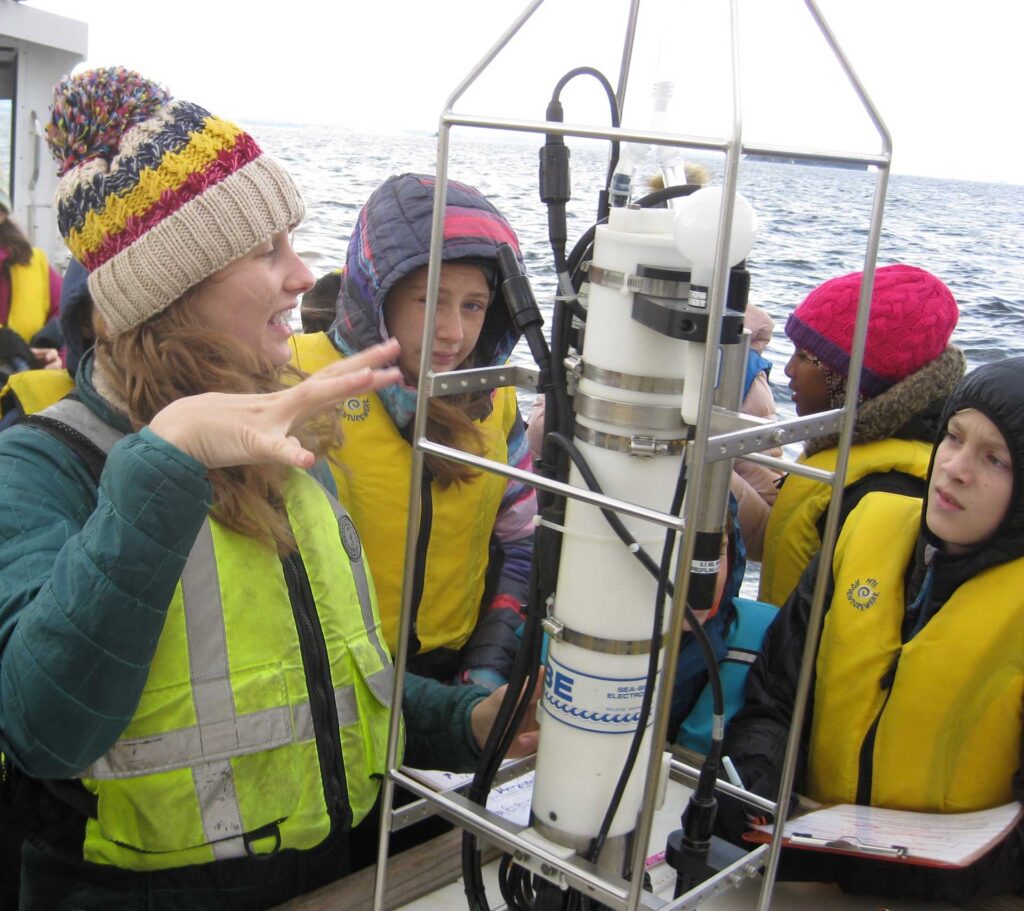
Environmental science
Advancing our understanding of the natural world, and Lake Champlain in particular.

For decades, work supported by the foundation has vastly expanded knowledge about the nation’s sixth largest lake, and continues to reach for new insights in plant biology.
Selected grantees
These organizations have been working in the vanguard of lake and plant scientific research.
Mapping Lake Champlain’s underwater landscape
Two multi-year projects out of Middlebury College, with major support from the foundation, have created the first comprehensive understanding of Lake Champlain’s underwater terrain, hydrology and shipwreck history.

- From 1996 to 2002, a team of scientists, researchers and students from the college and the Lake Champlain Maritime Museum developed images of more than 95% of the lake bottom, using single-beam sonar technology that was then state-of-the-art. The first underwater lake survey in more than a century yielded new insights into Champlain’s bottom topology, its hydrology (or water movement), and its archeology — with more than 70 previously unknown shipwrecks discovered and mapped.
- Key objectives of the Whole Lake Survey were to document the lake’s shipwrecks before invasive zebra mussels infested them, and to build new understanding of the lake bottom and the processes that have helped form it. Using Middlebury College’s research boat, the R/V Baldwin, and a second vessel, the project used satellite positioning and on-board computers to help collect and process almost 735,000 depth measurements.
- The foundation later helped make possible the college’s purchase of a more sophisticated research vessel, the R/V Folger, in service from 2012-2022. Using a newer, multibeam scanning system that produced even more accurate depth readings, college scientists Tom and Pat Manley led a second mapping project, with foundation support, that has greatly advanced understanding of the lake bottom and its water currents, chemistry and sedimentation.

Lake Champlain Research Consortium and Lake Champlain Maritime Museum
Through the Lake Champlain Research Consortium and other efforts, the foundation has supported important work in lake science:
- Research on two urgent ecological challenges — the spread of invasive zebra mussels and the growing presence, in sheltered bays and coves during warm weather, of potentially toxic cyanobacteria blooms.
- The publication of two book-length collections of papers on new scientific research related to the lake.
- The development of the Lake Champlain Maritime Museum, and its Nautical Archeology Center.

UVM’s Melosira
Lintilhac support enabled the University of Vermont to acquire its lake research vessel, the R/V Melosira, which was in steady three-season use from 1987 until it was retired in 2023:
- A variety of UVM lab classes — fisheries, limnology, geology — made use of the Melosira as an outdoor classroom.
- The vessel supported active research by faculty members, graduate students and others from the university’s Rubenstein Ecosystem Science Laboratory.
- Through the UVM Extension Watershed Alliance, part of the Lake Champlain Sea Grant program, the university offered educational trips to middle and high school students and the public aboard the Melosira, to experience hands-on lake research guided by watershed educators.

LaPlatte River Marsh
A multi-year study funded by the foundation has measured the impacts of a major road salt facility in Shelburne on the nearby 270-acre LaPlatte River Marsh, home to rare and protected plants, fish and amphibians especially sensitive to salinity:
- Operated by Vermont Railways, the storage and distribution yard — which extends into the conserved wetland — holds up to 80,000 tons of sodium chloride rock salt, delivered by train to be trucked around Vermont.
- The railroad’s own state-required monitoring, taken in the LaPlatte River half a mile from the salt yard, shows chloride levels below U.S. EPA standards for toxicity — but the independent study took samples from four locations in the marsh and closer to the yard. The independent sampling found that average salinity of water discharged from the site, via a stormwater pond and a shallow groundwater seep, was above EPA toxicity standards.
- Hundreds of road salt storage facilities are in use all over the northern U.S. “Without consistent and scientifically defensible standards for regulating these facilities, their water quality impacts will continue without oversight or appropriate control,” researchers Rebecca Tharp and Dana Allen conclude.

UVM Plant Biology
At UVM’s Plant Biology Department, a foundation-supported confocal microscopy lab enables scientists and students to build new understanding of how plants function:
- This advanced microscopy system uses highly focused laser light to scan plant cells and tissues in three dimensions, allowing researchers to view individual species at the molecular level — and can “stack” slices to build 3-D images that give insight into how microscopic elements of a plant work together.
- Among diverse uses of the confocal microscope, plant biologists are studying where a particular hormone is within a root system — and how it sends signals up to stems and leaves, so that branching, growth and other responses can adapt to soil conditions.
- Other researchers are “tagging” and examining specific proteins within root hairs, to better understand how they move within cells, contributing to the uptake of water and nutrients, the response to microbes, and other complex functions.
Apply for a Grant
Let’s shape Vermont’s future together. Learn more about our funding requirements and how to apply for a grant through the Lintilac Foundation.